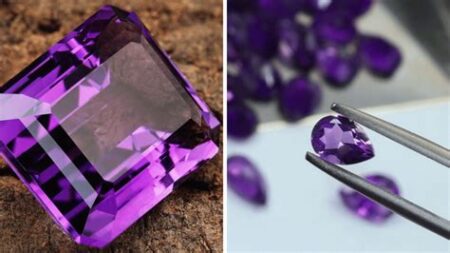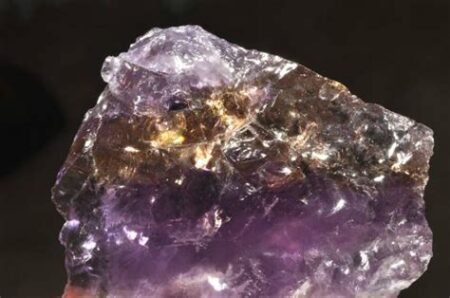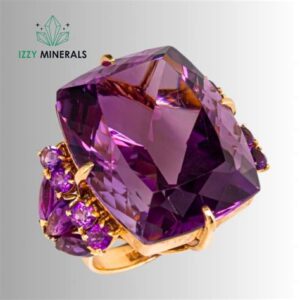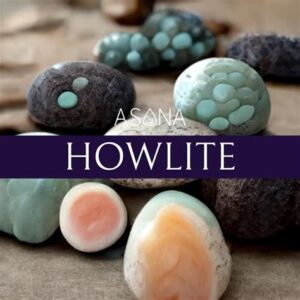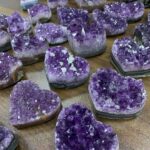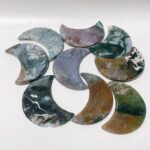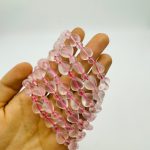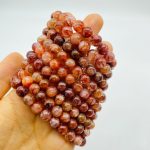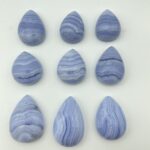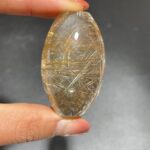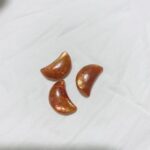Jaspers, a captivating and diverse family of gemstones, have captivated civilizations for centuries with their vibrant hues, intricate patterns, and potent metaphysical properties. From ancient amulets to contemporary jewelry, jaspers have played a significant role in human history and culture.

Overview of Jaspers
Jaspers, belonging to the quartz family, are microcrystalline aggregates of silicon dioxide (SiO2). Their unique characteristics, including color, texture, and translucency, result from the presence of various impurities such as iron, manganese, and aluminum. Jaspers are found worldwide in a wide range of geological settings, including hydrothermal veins, sedimentary deposits, and metamorphic rocks.
Types of Jaspers
The vast array of jaspers can be classified into several distinct types, each with its unique characteristics:
1. Common Jasper:
* Color: Red, brown, yellow, or gray
* Appearance: Opaque with a dull luster
* Occurs in sedimentary and metamorphic rocks
2. Heliotrope (Bloodstone):
* Color: Dark green with red spots
* Appearance: Translucent with a waxy luster
* Used in jewelry and carvings for its association with courage and healing
3. Dendritic Jasper:
* Appearance: Opaque with tree-like branch patterns
* Colors: Black, brown, or red
* Metaphysical properties include grounding and stability
4. Chrysanthemum:
* Appearance: Opaque with flower-like patterns
* Colors: White, gray, or brown
* Associated with prosperity and abundance
5. Dalmatian:
* Appearance: Black or brown spots on a white background
* Colors: White with black or brown spots
* Metaphysical properties include protection and nurturing
6. Landscape:
* Appearance: Opaque with scenes resembling landscapes or seascapes
* Colors: Red, brown, green, or yellow
* Metaphysical properties include inspiration and tranquility
7. Moss:
* Appearance: Opaque with moss-like inclusions
* Colors: Green, pink, or gray
* Metaphysical properties include peace and tranquility
8. Ocean:
* Appearance: Blue or greenish with wavy patterns
* Colors: Blue, turquoise, or gray
* Metaphysical properties include emotional balance and tranquility
9. Plume:
* Appearance: Opaque with feather-like patterns
* Colors: Red, gray, or black
* Metaphysical properties include grounding and stability
10. Red Jasper:
* Colors: Red or reddish-brown
* Appearance: Opaque or semi-translucent
* Properties include stimulating energy flow and promoting vitality
11. Yellow Jasper:
* Color: Yellow or yellowish-brown
* Appearance: Opaque
* Properties include promoting joy, optimism, and confidence
12. Green Jasper:
* Color: Green
* Appearance: Opaque
* Properties include grounding, healing, and promoting prosperity
13. Blue Jasper:
* Color: Blue or bluish-green
* Appearance: Opaque
* Properties include communication, tranquility, and emotional balance
14. Violet Jasper:
* Color: Purple or violet
* Appearance: Opaque or semi-translucent
* Properties include spiritual growth, intuition, and creativity
15. Polychrome Jasper:
* Appearance: Multi-colored with a mixture of jasper types
* Colors: Varies widely
* Properties include promoting harmony and balance
Properties of Jaspers
1. Colors: Jaspers exhibit a wide range of colors, including red, brown, yellow, green, blue, and purple.
2. Patterns: Jaspers often display intricate patterns, such as dendrites, landscapes, and feathers.
3. Hardness: Jaspers typically have a hardness of 6.5 to 7 on the Mohs scale, making them durable and resistant to scratching.
4. Metaphysical Properties: Jaspers are believed to possess various metaphysical properties, including protection, grounding, and spiritual growth.
Applications of Jaspers
1. Jewelry: Jaspers are used in a wide variety of jewelry designs, including necklaces, bracelets, earrings, and pendants.
2. Carvings: Jaspers are often carved into figurines, animals, and other decorative objects.
3. Energy Healing: Jaspers are popularly used in energy healing practices to promote physical, emotional, and spiritual well-being.
4. Feng Shui: Jaspers are placed in certain areas of a home or office according to the principles of Feng Shui to enhance energy flow and create a harmonious environment.
How to Identify Jaspers
1. Color and Patterns: Observe the color and patterns of the stone. Compare it with known jasper varieties.
2. Hardness: Test the hardness of the stone by scratching it with a knife or other sharp object. Jaspers will not scratch easily.
3. Luster: Determine the luster of the stone. Jaspers typically have a dull or waxy luster.
4. Inclusions: Look for any inclusions, such as minerals or crystals, within the stone.
Benefits of Using Jaspers
1. Protection: Jaspers are believed to offer protection from physical and psychic harm.
2. Grounding: Jaspers promote grounding and stability, helping to connect oneself to the present moment.
3. Healing: Jaspers are believed to aid in physical, emotional, and spiritual healing.
4. Energy: Jaspers are said to stimulate energy flow and promote vitality.
5. Tranquility: Jaspers are believed to promote peace, tranquility, and emotional balance.
Table 1: Properties and Applications of Jaspers
| Jasper Type | Color | Metaphysical Properties | Applications |
|---|---|---|---|
| Common Jasper | Red, brown, yellow, or gray | Grounding, stability, protection | Jewelry, carvings, energy healing |
| Heliotrope (Bloodstone) | Dark green with red spots | Courage, healing, vitality | Jewelry, carvings, amulets |
| Dendritic Jasper | Black, brown, or red with tree-like patterns | Grounding, stability, connection to nature | Jewelry, carvings, home décor |
| Chrysanthemum | White, gray, or brown with flower-like patterns | Prosperity, abundance, joy | Jewelry, carvings, energy healing |
Table 2: Comparison of Jasper Colors and Metaphysical Properties
| Color | Metaphysical Properties |
|---|---|
| Red | Vitality, energy, passion |
| Brown | Grounding, stability, protection |
| Yellow | Joy, optimism, confidence |
| Green | Healing, prosperity, growth |
| Blue | Communication, tranquility, emotional balance |
| Purple | Spiritual growth, intuition, creativity |
Table 3: Effective Strategies for Using Jaspers
| Need | Jasper Type | Application |
|---|---|---|
| Grounding | Brown, black, red | Place stones on the root chakra (base of spine) |
| Protection | Red, black | Wear jasper jewelry or carry stones in pockets |
| Healing | Green, blue, red | Meditate with stones or place them on the affected area |
| Energy | Red, yellow | Carry stones or wear jasper jewelry |
| Tranquility | Blue, green | Place stones in a meditation space or near a bedside |
Table 4: Step-by-Step Approach to Identifying Jaspers
| Step | Action |
|---|---|
| 1 | Observe the color and patterns of the stone. |
| 2 | Test the hardness of the stone by scratching it. |
| 3 | Determine the luster of the stone. |
| 4 | Look for any inclusions within the stone. |
| 5 | Compare the stone with known jasper varieties. |
Conclusion
Jaspers, with their captivating colors, intricate patterns, and diverse metaphysical properties, offer a wide range of benefits for both physical and spiritual well-being. By understanding the different types of jaspers, their properties, and applications, one can harness their unique energies to enhance life in various ways. From grounding and protection to healing and tranquility, jaspers continue to fascinate and empower individuals around the world.

